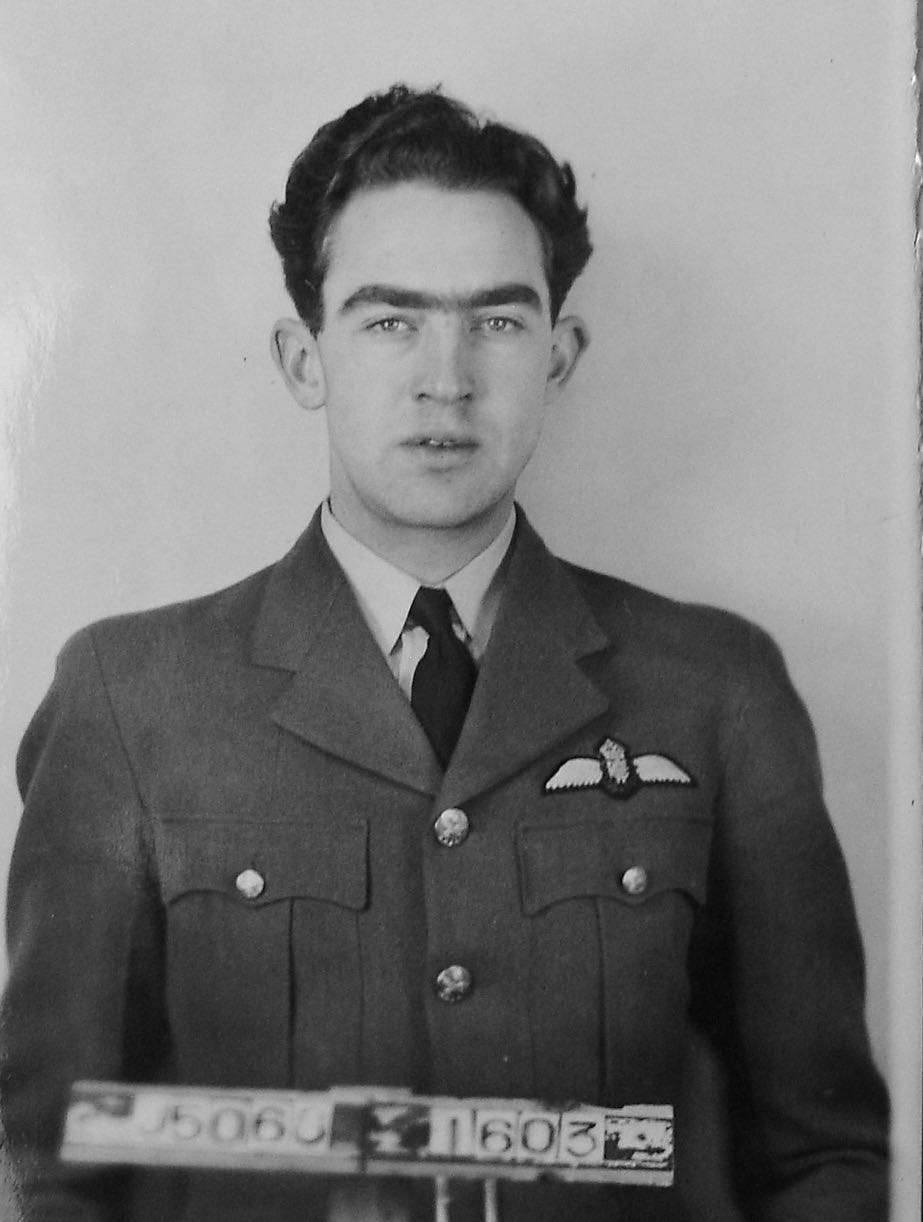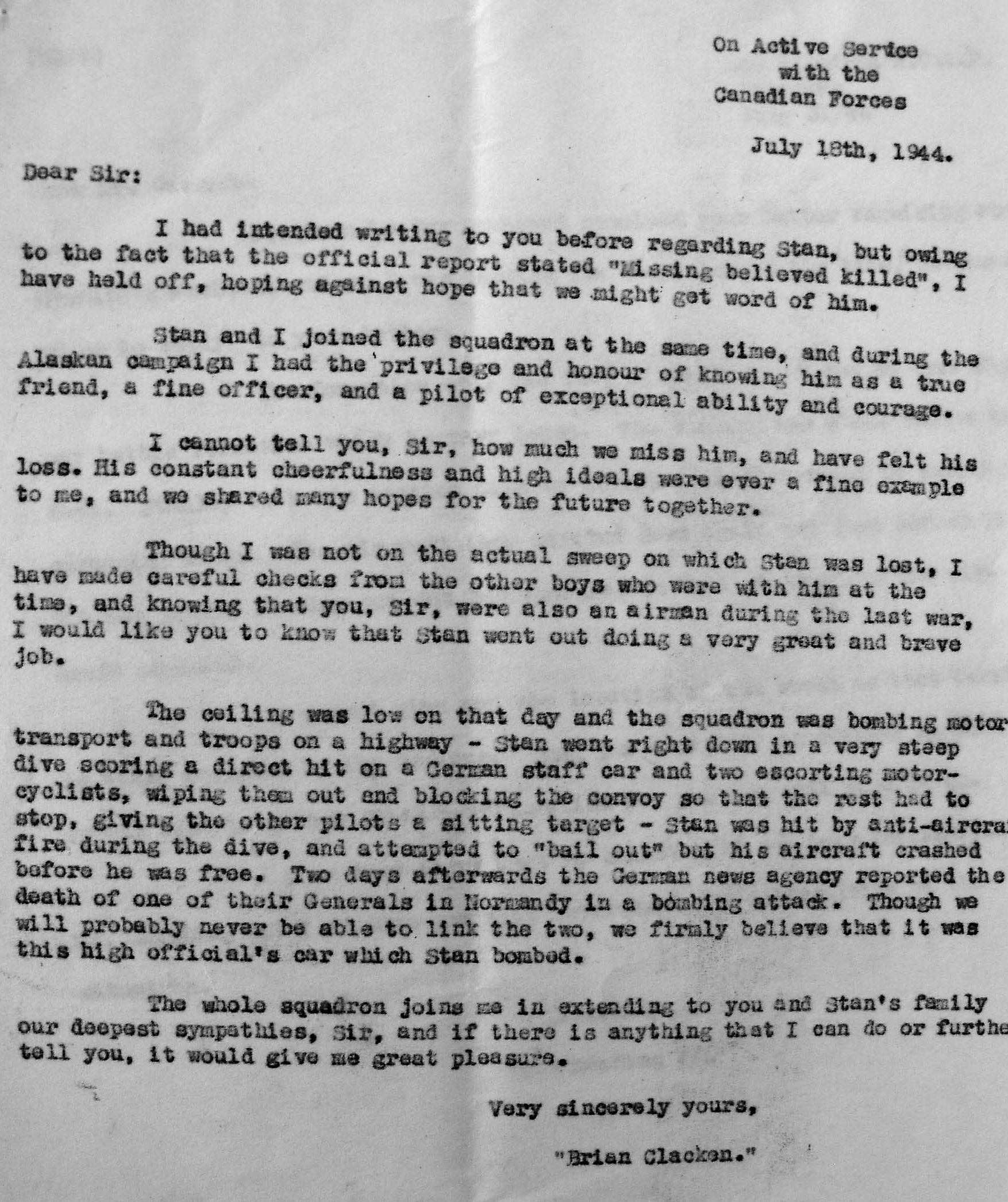

November 28, 1919 - June 4, 1944


Stanley 'Stan' Vincent Garside was born on November 28, 1919 to Thomas Emsley and Maude (nee Harris) Garside of Edmonton, Alberta. His father was a lawyer for the City of Edmonton, as well as a WWI vet. Stan was the brother to Richard, Gordon and Hazel. The family was Anglican. He was an articled clerk, and a student of chartered accounting. He thought he might like to be a chemical engineer after the war. He enlisted in late August 1940.
He found himself as an instructor at No 31 EFTS, De Winton, Alberta in late 1941. "A rather disappointing officer so far. Works just hard enough to keep out of trouble and has not shown a great deal of merit as an officer or instructor. Would benefit from a change of unit."
By May 1942, he was a "keen, energetic pilot and good officer. Worthy of promotion." Two months later at No. 1 B&G, "routine worker, not much initiative. Does only that required of him. Has very little interest. Occassionally takes the lead and improves his knowledge if not too much effort."
By October 15, 1943, he was seen as a very fine pilot and also a good leader both in the air and on the ground, at Patricia Bay.
On May 1, 1944: "Instructed in Canada and then posted to an op. squadron in Alaska. Feb 1st he arrived in the UK as a pilot with 440 Squadron and only recently commenced operations from this country. Is a very good pilot, is capable of leading a flight and possesses excellent organizational abilities." S/L W. H. Pentland
Brian Clacken, on July 18, 1944, wrote a letter to Garside's family. "Stan and I joined the squadron at the same time and during the Alaskan campaign I had the privilege and honour of knowing him as a true friend, a fine officer and a pilot of exceptional ability and courage. I cannot tell you, Sir, how much we miss him, and have felt his loss. His constant cheerfulness and high ideals were ever a find example to me, and we shared many hopes for the future together. Though I was not on the actual sweep on which Stan was lost, I have made careful checks from the other boys who were with him at the time and knowing that you, Sir, were also an airman during the last war, I would like you to know that Stan went out doing a very great and brave job. The ceiling was low on that day and the squadron was bombing motor transport and troops on a highway. Stan went right down in a very steep dive scoring a direct hit on a German staff car and two escorting motorcyclists, wiping them out and blocking the convoy so that the rest had to stop, giving the other pilots a sitting target. Stan was hit by anti-aircraft fire during the dive and attempted to bail out, but his aircraft crashed before he was free. Two days afterwards, the German news agency reported the death of one of their Generals in Normandy in a bombing attack. Though we will probably never be able to link the two, we firmly believe that it was this high official's car which Stan bombed. The whole squadron joins me in extending to you and Stan's family our deepest sympathies, Sir, and if there is anything that I can do or further tell you, it would give me great pleasure."
Doug Gordon, fellow 440 Squadron pilot says, "I was his wingman. Three German vehicles were heading inland. We went down on them. Garside was too close to bomb and his left wing was on fire. He was too low and landed in an apple orchard." Within Garside's files at the Library and Archives Canada in Ottawa, Mr. Garside was filled with many questions, twenty seven to be exact in one letter. Hal Gooding answered some. Doug Gordon, now back in Canada, on July 2, 1946, offered to answer Mr. Garside's questions as he wrote, "Being his No. 2 on the sweep, I was the only one who saw what actually happened, so I know the answers to most of his questions."
From a report in March 1946, F/L Marchisio, said that Garside's Typhoon MN548 had caught some high tension cables and crashed into the field.On March 20, 1946, Garside's body was discovered buried in a field belonging to M. Pierre Laignel, on the outskirts of the village of LaVacquerie at a spot called La Haie. The grave was unmarked but was surrounded by a fence. Marchisio commented, too, that the grave was not registered but was very well kept. Garside was reinterred into the Bayeux War Cemetery.
LINKS: